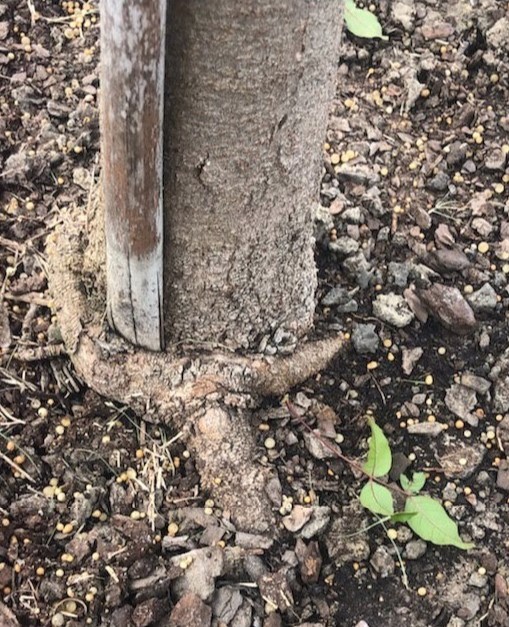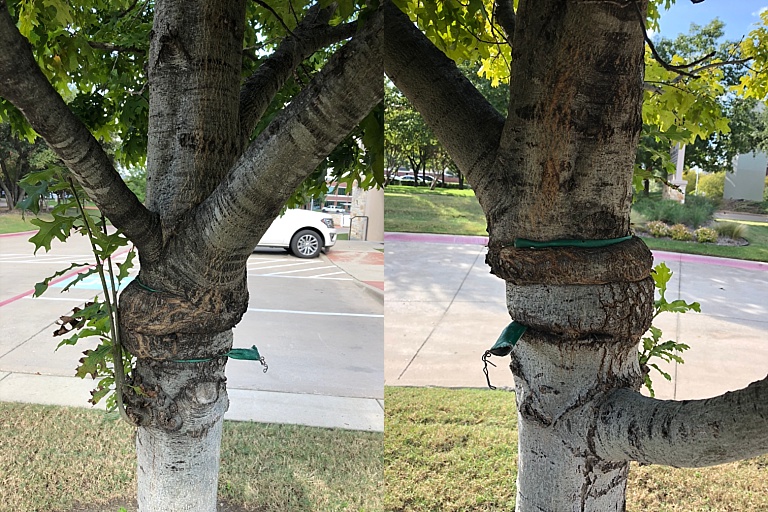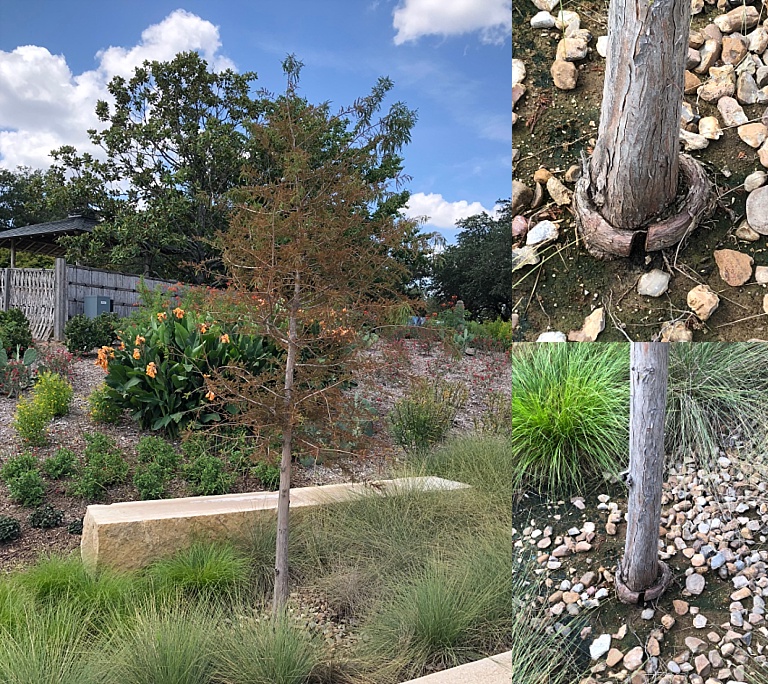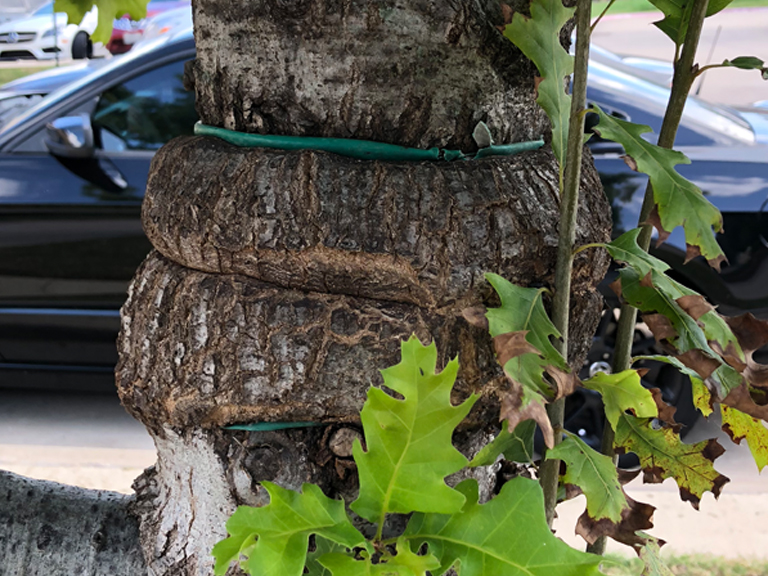I know their are so many more exciting things to discuss in the gardening world, but I feel like girdling and especially root girdling are usually left out. For whatever reason I have noticed at least 3 cases while running errands around DFW in the last month. It’s like the blog gods have given me a sign and called upon me to share my girdling wisdom with you.
What is Girdling?
Branch, trunk and root girdling is caused when the trunk, branches or roots of the tree are pinched and cause blockages which stop the flow of nutrients. With root girdling, the roots will then grow up towards the surface and then circle around the trunk. If the roots or trunk of the tree gets girdled then the entire tree will decline and ultimately die. If only a branch gets girdled then just that branch will decline. Imagine pinching a straw and then trying to take a drink. Girdling causes the same effect for a tree. Eventually the straw is pinched so tight that no nutrients are making their way up the tree and then the tree starts to decline and show signs of stress. The tree is then literally strangled as the trunk and roots enlarge over time.
Signs of Girdling
-Reduced canopy growth or thin crown
-Early fall coloration or early defoliation, often on one side
-Flattened appearance at trunk base or lack of trunk flare
-Roots circling the trunk at, or just below, ground level

What Causes Girdling & Root Girdling?
-Planting trees too deep in the ground. When roots are buried they are not receiving all of the oxygen that is needed. We have had a few customers that think the solution to keeping a tree from blowing over in a storm is to plant it deeper. We always educate them so that they realize all of the damage that is caused if they insist on planting the tree themselves that way.
-Applying Way to Much mulch on top of the roots after planting This creates what most like to call a mulch Volcano, and they are terrible for the roots and honestly quite unsightly in my opinion.
-Poor Nursery Practices Some nurseries do not follow strict girdling prevention plans like we do. We never leave trees in containers long enough for them to get root bound. You do not want swirling roots in the containers when planting.
-Leaving Guidewires on Too Long After Planting & Staking This is easily preventable by removing wires once a tree is established and adjusting wires as needed as the tree grows. We recommend that newly planted trees remained staked for 2 years so that they have time to get rooted out.
-Leaving wire baskets, burlap, and containers on the roots This seems so obvious to most I am sure, but you would be surprised how many times we go to remove dead trees for customers and their previous landscapers have left such materials on the tree when planting.

How to Prevent Girdling & Root Girdling?
-Proper planting procedures Here at Treeland we follow a strict planting procedure which helps prevent root girdling. Sometime girdling happens regardless because of tree genetics, but taking extra steps to prevent gives the tree it’s best chance to thrive. We make sure to plant the tree at the appropriate level to allow for an exposed root flare. Sometimes we get calls from customers thinking that we need to add more dirt, but we take the time to educate them on the importance of keeping the root flare exposed.
-No more than 1-2″ of mulch This one is done way too often around the Dallas-Fort Worth area. I have no idea who is keeping this trend alive, but it’s not attractive and it harms the trees by suffocating the roots. Keep just a thin layer of mulch on the tree and then you will be fine.
-Remove and adjust guidewires after 2 years Set a reminder on your calendar if needed, do not let the tree start growing around the wires. Make sure they are removed in the appropriate amount of time after planting. Once a tree grows over the wires completely then you are out of luck.
-Avoid planting large trees in containers Trees will ultimately get root bound which will then lead to girdling. If you must have a tree in a container, then only leave it in that size container temporarily. Make sure to loosening the roots whenever potting up as well. Also adding this in because I got a strange call from a customer yesterday. No trees do not stay small when planted in a small pot. Trees are not goldfish, and they will grow as large as they want.
-Never shove and bend roots to fit into a small hole. Dig a larger hole so the roots can lay in their natural state and not get bent.
How to Treat?
I do want to start with mentioning that not all trees will be treatable as some cases are just too severe and treatment will cause more harm than good. For the cases which are caught in time, treatment is an option but success can never be 100% guaranteed. If a branch has girdling then that can be pruned off. For root girdling you must start by gently removing the soil around the base. Roots only go about 18″ down, so it’s not too far that you have to dig. You can remove smaller girdling roots using a chisel, pruners or saw. For larger roots, using a saw, cut the root about 6″ away from the trunk. Next cut the root by the trunk and remove the root. Sometimes a root is too large to cut and would cause too much damage to the tree to be completely removed. In that event it is best to just cut once into the root and then leave the girdled root alone. See the images below for a great example of this method completed by the San Antonio Arboretum. This will allow the root to decay away over time without severely harming the tree.

If you are unsure if your tree is experiencing girdling, make sure to reach out to a licensed arborist in your area to help diagnose and treat.
-Denise














